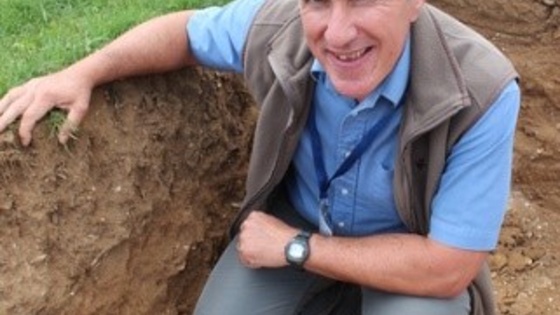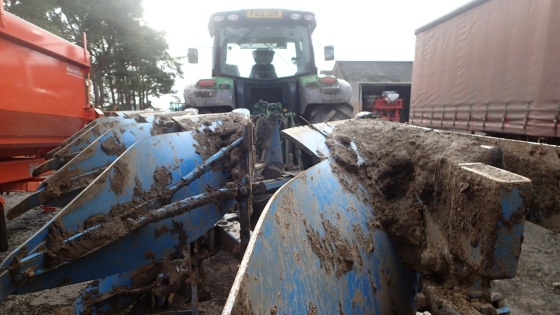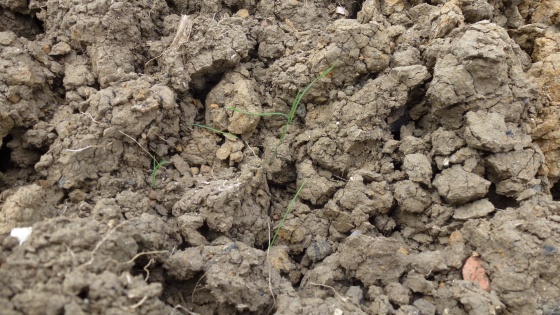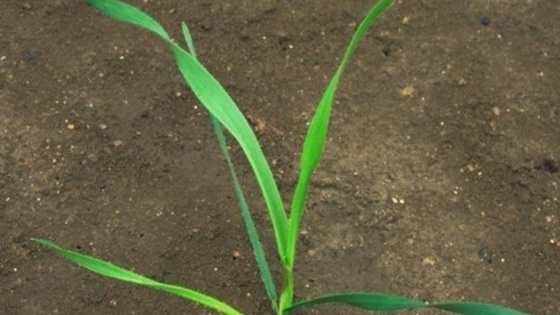Cultivation Principles - Sterile/Barren brome
Germination is inhibited by light, dry conditions and high temperatures, a covering of chopped straw is enough to block out light and stimulate germination. A shallow cultivation will place seed in darkness and into contact with moisture encouraging germination. Spray off with glyphosate before drilling or bury below 10cm to prevent emergence.
Conventional, Strip Tillage and Direct Drilling are all appropriate when considering this weed. Note detailed comments on establishment.
Other cultural controls
Brome exploits bare patches in headlands, in field margins and in the bare strip between crop and headland.
Maintain vegetation cover on field margins by sowing a perennial ryegrass mixture and/or avoiding drift of graminicides or non-selective herbicides to avoid creating bare patches.
Manage the bare strip between crop and margin either spray with glyphosate or mow but mow within 2-6 days of flowering to prevent viable seed forming, mowing may need to be repeated as late tillers come into head at a later date.
At harvest clean the combine between infested fields to avoid transferring seed between fields.
Ploughing the outer few metres of the headland should reduce the risk of spread as burial to 15cm prevents seed emergence
Correct compaction problems on headlands so crops establish well and are competitive. Increasing the seedrate of the crop can reduce brome populations by approximately 40%.

Cultivation Principles
Our Expert
Philip Wright
Philip Wright was trained in agricultural engineering at Silsoe College, Bedford, gaining an Honours Degree in 1979. He became registered as a Chartered Engineer with the Engineering Council in 1990, and is a member of the Institution of Agricultural Engineers, the American Society of Agricultural and Biological Engineers and the British Society of Soil Science. Philip was technical director of Simba International (now Great Plains), the UK leading manufacturer of cultivations machinery, having been employed there since 1979.
As part of the BASF panel of Arable Weed Control experts, Philip will advise on cultivations and drilling techniques specifically targeting the control of various key weeds, for example how they respond soil disturbance, where the weed seed bank needs to be for best control [inverted/buried, or in the upper zone of maximum residual herbicide efficacy], plus the ideal scenarios for effective control – delayed drilling, spring cropping, other cultivations and residue/canopy management options, ideal cropping rotation sequences, etc.

Residue spreading and shallow stale seedbed cultivation by raking
Residue Management: Ensure an even spread of residues across the field and a good chop of straw to maximise herbicide efficacy. Straw chopper knives need changing/reversing regularly – often 3 or more times a season.
Where appropriate (e.g. when direct drilling with appropriate drill into high residue levels) leave a longer stubble height. Stubble mulching of high stubbles can be used where straw needs time to become brittle after harvest.
Residue spreading and shallow stale seedbed cultivation by raking (multiple passes followed by glyphosate as needed) combined with surface rolling (for effective herbicide action, weed germination & slug management) or delayed shallow discing/rolling is effective to manage residues, control slugs, and create the best conditions to stimulate weeds outside the crop, and ahead of ploughing.
Rolling stubbles encourages weed seed to soil contact with minimal surface mixing
Depth to be only just greater than drilling depth of following crop, ideally ≤5cm. Consolidate after tillage to maintain moisture in the stale seedbed. Surface consolidation is essential after shallow tillage, plus surface consolidation is needed following deeper tillage. NOTE: Germination occurs in the dark even under residues, so delay deeper tillage or preferably, use the plough.

Ploughing will complement shallow surface disturbance by fully inverting and burying the surface seed bank to a depth of 15 to 20cm. As survival at depth is 2 years or less, ploughing reduces populations by 95%. Ploughing frequency needs to be appropriate for this. Effective burial by
1. Suitably narrow furrow width (30/35cm on heavier soils) and share width < furrow width
2. Sensible forward speed
3. Appropriately set skimmers
4. Post plough pressing to close the surface and exclude light
5. Pre-cultivation shallow if needed so soil/straw contact of the buried residues allows efficient breakdown and good rates of water movement through the profile.
Maintain seed bank horizons by controlled surface disturbance of any prior operations. Loosening only as needed if > plough depth by low rake angle winged tines with adequate lift height for conditions and depth worked. This controlled vertical fissuring also minimises disrupting the weed seed bank horizons. On heavy soils where deeper loosening is needed, provided conditions are suitably dry for fissuring, this operation could be left until after ploughing. Pressing when loosening will help to achieve the following seedbed, and a suitably low surface disturbance lifting action will avoid bringing buried residues and weed seeds back to the surface which is ESSENTIAL.
AT ALL COSTS avoid:
1. Deep non- inversion mixing
2. Re-inversion before 5 or more years
3. Lower depths of disturbance when cultivating than during follow-on spring drilling
4. Failure to consolidate after soil disturbance as this will lose moisture and adversely affect germination potential of the weed seeds

